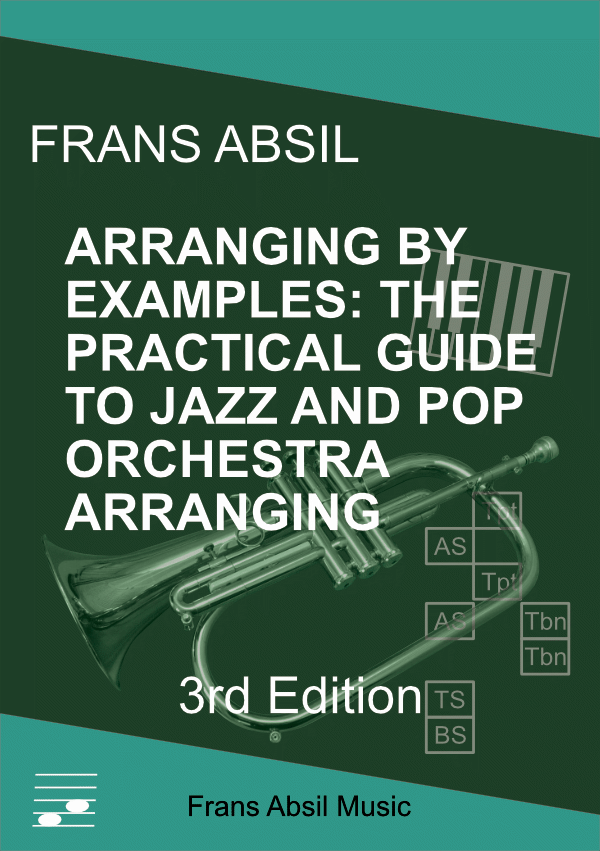Homepage > Documents > Tempo Indications and Metronome Markings
Overview of typical tempos and metronome markings for classical and dance music
Tempo Indications and Metronome Markings
This page presents an overview of classical music tempo indications in Italian, English, French and German, with rough metronome markings (M.M. = Maelzel's Metronome = BPM = Beats Per Minute) in the left column.
Also, for a number of popular music styles (ballroom dancing, Latin-American music, Brazilian, etc.), meter and typical metronome marking ranges are listed. Find a number of reference sources at the bottom of the page.
Use this page in landscape mode on mobile devices.
Metronome Markings >> | Style/Tempo Indications >> | Sequencer Tickmarks and Durations >> | References >>
Table of tempo indications (Classical music)
| M.M. | Italian | English | French | German |
|---|---|---|---|---|
| 40 | Larghissimo | |||
| Adagissimo | Extremely slow | Très lent | Sehr langsam, Ganz langsam | |
| Lentissimo | ||||
| Largo | ||||
| Adagio | Very slow | Lent, Large | Langsam, Breit | |
| Lento | ||||
| Larghetto | Rather slow | Un peu lent | Etwas langsam | |
| Adagietto | ||||
| 60 | Andante | Moderately slow | Allant, Très modéré | Mässig langsam, Gehend |
| Andantino | ||||
| Moderato | Moderately | Modéré | Mässig, Mässig bewegt | |
| Allegretto | Rather fast | Un peu animé | Etwas bewegt | |
| 120 | Allegro | Fast, Quick | Animé | Bewegt, Schnell |
| Vivace | ||||
| Vivo | Quite fast | Vif, Vite | Lebhaft, Eilig | |
| Presto | ||||
| 208 | Allegrissimo | |||
| Vivacissimo | Very fast | Très vif | Ganz schnell, Ganz lebhaft | |
| Prestissimo |
Metronome Markings >> | Style/Tempo Indications >> | Sequencer Tickmarks and Durations >> | References >> | Top of Page >>
Style and tempo indications (Popular music)
Since various sources were consulted, there may be multiple range entries in the table. Typical values for international dance contests are indicated between brackets.
| Style | Meter | M.M. | Comment |
|---|---|---|---|
| Ballroom dancing | |||
| Slow Waltz | 3/4 | 87-102 (90) | 30 bars/min |
| English Waltz | 3/4 | 90-100 | 30 bars/min. Andante |
| Vienna Waltz | 3/4 | 180, 192 | 60 bars/min. Presto |
| Slow Fox | 4/4 | 112-136, 72-120 (120) | 30 bars/min. Slow Foxtrott |
| Quickstep | 2/2 | 80-104, 96-104 (106) | 52 bars/min. Fast Foxtrott |
| Charleston / Dixieland | 2/2 | 108 | 54 bars/min |
| Boogie Woogie / Rock'n Roll Shuffle | 4/4, 2/2 | 160-200 | 40 bars/min. Allegro - Prestissimo |
| Straight Rock'n Roll | 4/4 | 160-172 | 40 bars/min |
| Twist | 4/4 | 160-168 | 40 bars/min |
| Slow-Rock / Rock-Blues | 6/8 | 60-72 | 30 bars/min. Adagio |
| Polka | 2/4 | 120 | 60 bars/min. Moderato, Allegro |
| March | 4/4 | 120-124 | 30 bars/min. Allegro |
| Tango | 4/4 | 120-136 (132) | 33 bars/min |
| Pasodoble | 2/4 | 120-124 | 60 bars/min |
| Samba | 2/2 | 100-116, 112-116 (100, 104) | 50 bars/min |
| Bossa Nova | 4/4 | 120-160 (120) | 30 bars/min |
| Beguine | 4/4 | 112 | 28 bars/min |
| Cha-Cha-Cha | 4/4 | 128-144, 126-136 (128, 144) | 32 bars/min. Allegro |
| Rumba | 4/4 | 100-128, 112-120 (100, 108) | 27 bars/min |
| Mambo | 2/2 | 112-120 (120) | 30 bars/min |
| Bolero | 4/4 | 116 | 29 bars/min |
| Bolero Cubano | 4/4 | 84-112 | 21 bars/min. Andante |
| Calypso | 4/4 | 112 | 28 bars/min |
| Merengue | 2/2 | 116 | 29 bars/min |
| Paso Doble | 2/4 | 116-124 (124) | 62 bars/min |
| Jive | 4/4 | 128-168 (168) | 42 bars/min |
| Latin / Afro-Cuban Rhythms | |||
| Mambo | 2/2 | 86-102 | Derived from Son Cubano |
| Afro-Cuban, Bembe, Nanigo | 6/8 | 76-102, 108-132 | African religious origin, polyrhythmical |
| Guaracha | 2/2 | 86-94 | Fast Cuban dance |
| Guajira | 4/4 | 114-128 | Moderate to medium song and dance form |
| Guaguancó | 2/2 | 94-122 | Derived from Afro-Cuban Rumba. Moderate to fast |
| Conga, Comparsa | 2/2 | 116-126 | Derived from Contredanza Cubana. Fast, lively. |
| Mozambique | 2/2 | 70-118 | Derived from Conga. Cuban carnival dance. Fast |
| Bolero | 4/4 | 98-106 | Spanish origin. Slow |
| Cha-Cha-Cha | 4/4 | 88-132 | Derived from the Danzón. Medium tempo |
| Songo | 2/2 | 100-128, 96-126 | Modern style (1970s) with strong focus on percussion |
| Latin / Caribbean Rhythms | |||
| Merengue | 2/2 | 112-122 (116) | Song and dance style from Dominican Republic, Haiti. Fast, expressive |
| Cumbia | 4/4 | 82-96 | Song and dance style originating from Columbia, popular in Mexico. |
| Calypso | 2/2 | 96-114 (112) | Folk song style from Trinidad and Tobago. Moderately fast |
| Soca | 4/4 | 104-132 | Derived from the Calypso in the 1970s. |
| Ska | 4/4 | 60-86 | Originated in the 1950s in Jamaica, predecessor to the Reggae |
| Reggae | 4/4 | 72-108 | Originating in the 1960s in Jamaica. |
| Brazilian Rhythms | |||
| Samba | 2/2 | 88-102 (104) | Round dance, Carnival music |
| Samba Batucada | 2/2 | 108-126 | Percussion only, Carnival music |
| Bossa Nova | 4/4 | 96-138 (120) | Originated in the 1950s. Cool and light |
| Baiao | 2/2 | 102-112 | Originated in the 1940s |
| Maracatu | 2/2 | 76-86 | Procession-like, ritual dance. Slow |
| Afoxé | 2/2 | 102-108 | Originated in the Yoruba religion |
| Caterete | 2/2 | 94-108 | Related to the Baiao rhythm. |
| Frevo | 2/2 | 120-136 | Derived from the Samba. Fast |
| Pre-Classic Ballet Dances | |||
| Pavane | 4/4, 2/2 | Slow, stately | |
| Galliard | 3/4 | Lively | |
| Allemande | 4/4 | Folk, country dance, lively | |
| Courante | 3/4 | Court dance | |
| Sarabande | 3/4 | Court dance, slow and processional | |
| Gigue | 6/8 | Lively | |
| Minuet | 3/4 | Court dance, moderato | |
| Gavotte | 2/2 | Peasant dance, moved to the court. Allegro vivace | |
| Bourree | 4/4 | Peasant dance, allegro | |
| Rigaudon | 2/2 | Allegro | |
| Passepied | 3/8 | Vivace | |
| Chaconne and Passacaglia | 3/4 | Spanish orign, slow and solemn, moderato | |
| Loure | 6/4 | Slow gigue | |
| (Style) | (Meter) | (M.M.) | (Comment) |
Metronome Markings >> | Style/Tempo Indications >> | Sequencer Tickmarks and Durations >> | References >> | Top of Page >>
Sequencer tickmarks and durations
The table below shows a limited set of durations (in milliseconds). For an interactive page with many more tempo selection options, see the Note and Sequencer Tick Timing GUI tool on this website.
| Sequencer | Duration [ms] | |||||||||
|---|---|---|---|---|---|---|---|---|---|---|
| Note | Ticks | 40 BPM | 60 BPM | 80 BPM | 90 BPM | 120 BPM | 160 BPM | 180 BPM | 200 BPM | 240 BPM |
| 1 | 3840 | 6000 | 4000 | 3000 | 2667 | 2000 | 1500 | 1333 | 1200 | 1000 |
| 1/2 | 1920 | 3000 | 2000 | 1500 | 1333 | 1000 | 750 | 667 | 600 | 500 |
| 1/4 | 960 | 1500 | 1000 | 750 | 667 | 500 | 375 | 333 | 300 | 250 |
| 1/8 | 480 | 750 | 500 | 375 | 333 | 250 | 187.5 | 166.7 | 150 | 125 |
| 1/16 | 240 | 375 | 250 | 187.5 | 166.7 | 125 | 93.75 | 83.33 | 75 | 62.5 |
| 1/32 | 120 | 187.5 | 125 | 93.75 | 83.33 | 62.5 | 46.86 | 41.66 | 37.5 | 31.25 |
| 1/64 | 60 | 93.75 | 62.5 | 46.86 | 41.66 | 31.25 | 23.43 | 20.83 | 18.75 | 15.63 |
| 1/128 | 30 | 46.86 | 31.25 | 23.43 | 20.83 | 15.63 | 11.71 | 10.42 | 9.38 | 7.82 |
| 1/256 | 15 | 23.43 | 15.63 | 11.71 | 10.42 | 7.82 | 5.86 | 5.21 | 4.69 | 3.91 |
Metronome Markings >> | Style/Tempo Indications >> | Sequencer Tickmarks and Durations >> | References >> | Top of Page >>
Reference sources
Here's a list of reference sources:
- Dirk Brand, 1000 Faces of Drum Styles, (in German) AMG Verlag GmbH, Brühl, ISBN 3-927190-93-4 (1997).
- Sem Dresden, Algemene Muziekleer, 12de druk (in Dutch) Wolters-Noordhoff, Groningen, the Netherlands (1972).
- Siegfried Hofmann, Das große Buch für Schlagzeug und Percussion, (in German) Voggenreiter Verlag, Bonn, ISBN 3-8024-0221-9 (1994).
- Alfred Pfortner, Der Einsatz lateinamerikanischer Rhythmusinstrumente in Big Band und Blasorchester, (in German) Joh. Siebenhüner Musikverlag, Mörfelden.
- Kleon Raptakis, The Complete Book of the World's Dance Rhythms, Kleon Raptakis Publications, Astoria, NY.
- Gardner Read, Music Notation, A Manual of Modern Practice, Victor Gollancz Ltd., London (1985).

